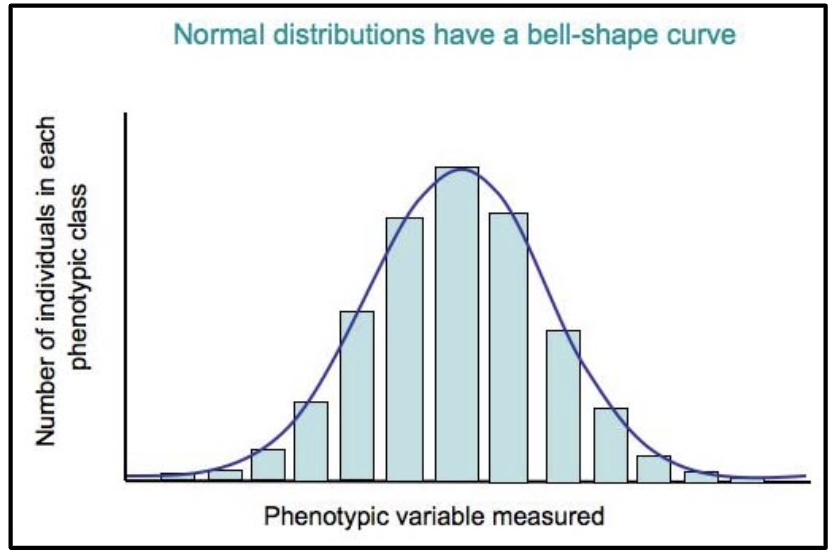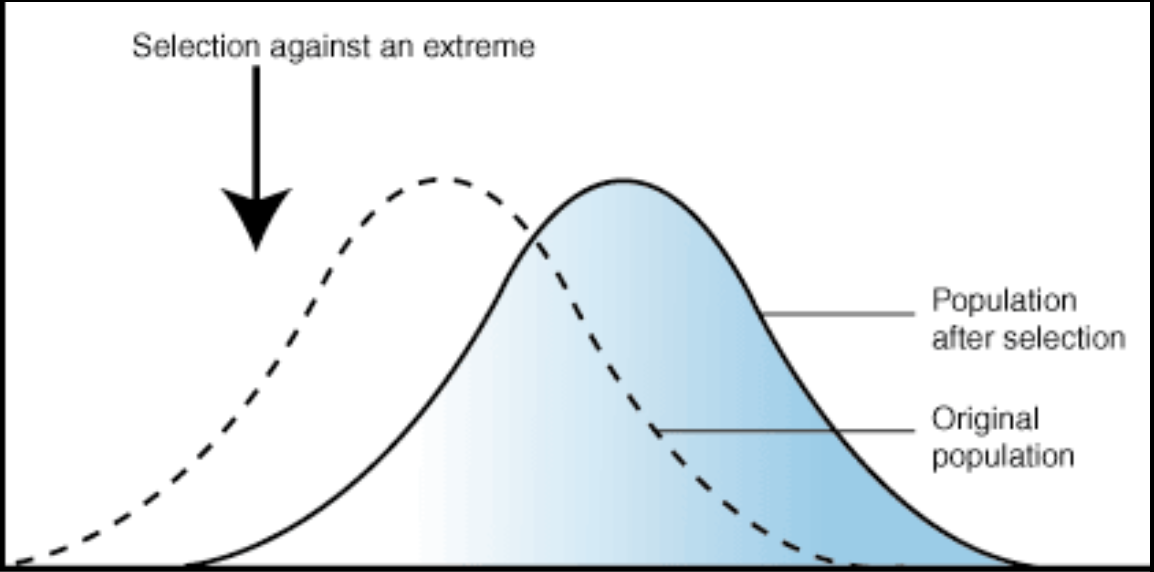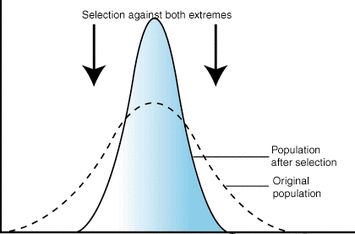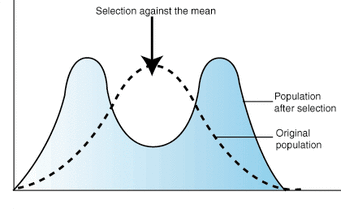2.1 modes of selection
struggle for existence/survival of the fittest → WRONG
Relative fitness
contribution an individual makes to the gene pool of the next generation relative to the contributions of other individuals
how many of genes are getting passed on
survive
have babies
babies survive and have babies
modes of selection
normal distribution of a phenotype

Directional selection
conditions favor individuals exhibiting one extreme of the trait
mean shifts

stabilizing selection
favors intermediate phenotype and extremes selected against
same mean, reduced variance

disruptive selection
conditions favor both extremes of the phenotype, intermediate selected against
same mean, increased variance

sexual selection
one sex chooses favorable traits in the other
female choice because of increased reproductive investment
members of the same sex compete w/ e/o
intimidate, deter, fight
sexual dimorphism → difference in size/appearance between sexes
artificial selection
breed for desirable traits